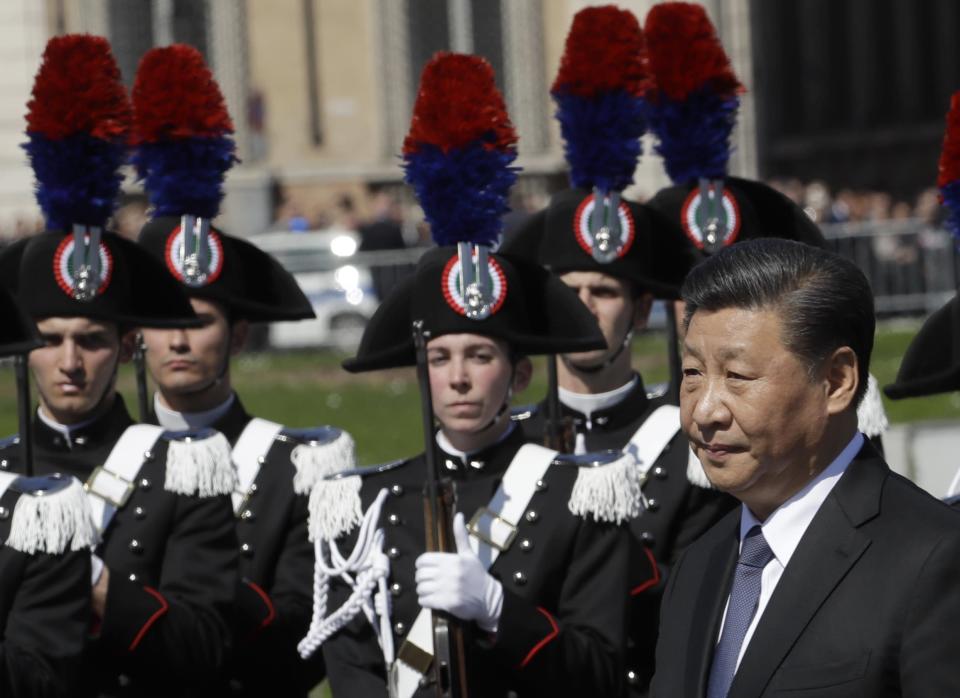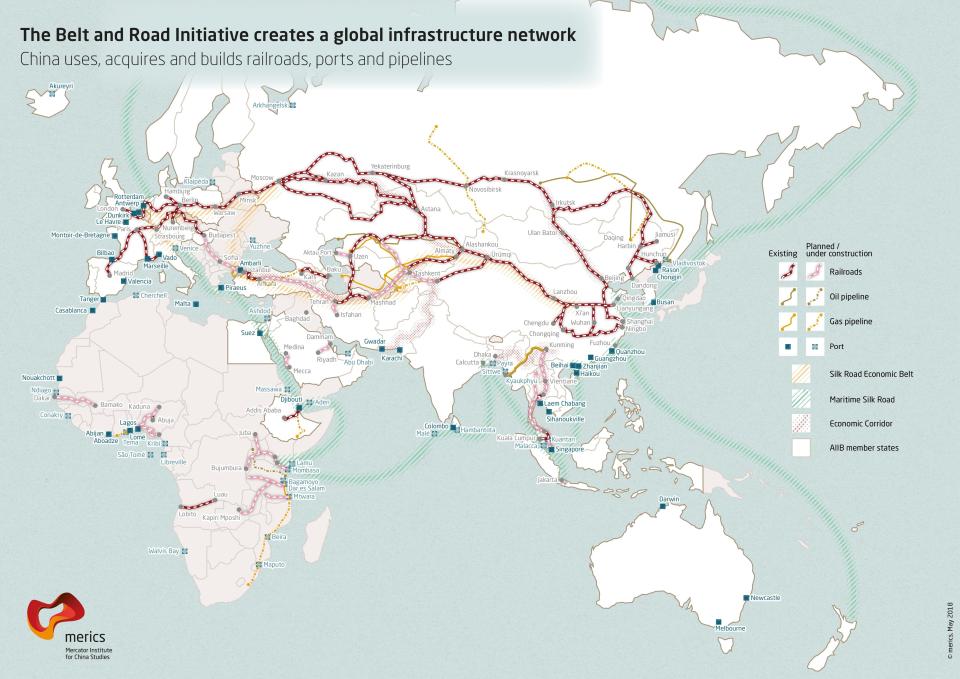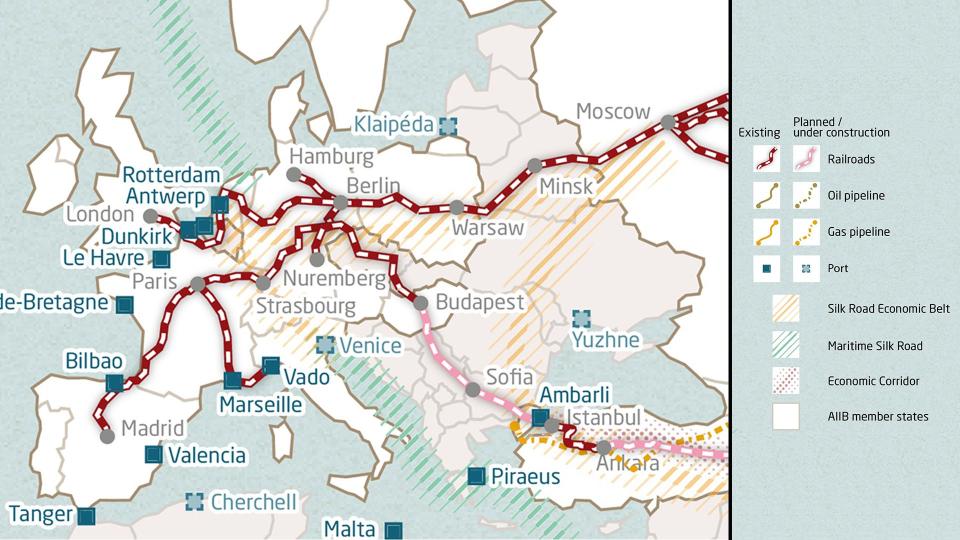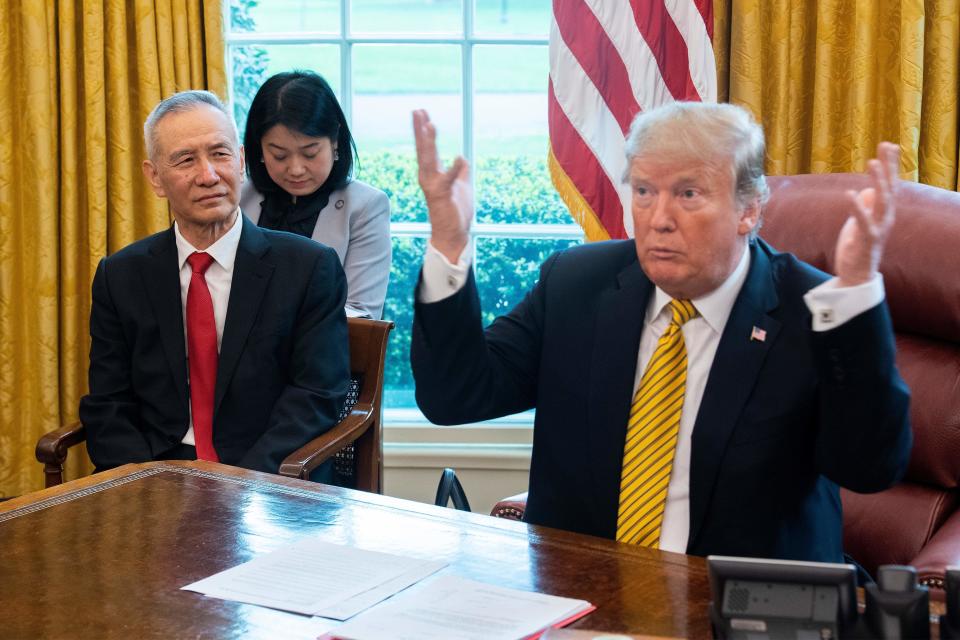EU on the New Silk Road: China is both a 'partner' and a 'systemic rival'
China has been aggressively initiating infrastructure projects from Bangladesh to Britain, funneling billions into them as part of its ambitious Belt and Road Initiative (BRI) or New Silk Road.
Some European countries are increasingly buying in, while others are skeptical of Beijing’s ultimate intentions. Indicating the continent’s ambivalence, a European Union (EU) spokesperson told Yahoo Finance that China is both a “cooperation partner” and a “systemic rival.”

‘Promoting alternative models of governance‘
Italy signed a Memorandum of Understanding with the People’s Republic of China last month, becoming the first of the G7 economies — which includes the US — to join the BRI. Wide-ranging cooperation is likely to ensue between banks, a Chinese construction company, Italian ports and Italian agriculture.
The deal was highly controversial with many parties criticizing Italy’s willingness to work with China, citing concerns about opaque financial practices.
“China is simultaneously a cooperation partner, with whom the EU has closely aligned objectives; a negotiating partner, with whom the EU needs to find a balance of interests; an economic competitor in pursuit of technological leadership; and a systemic rival, promoting alternative models of governance,” the EU spokesperson told Yahoo Finance.

‘China’s infrastructure vanity project’
The BRI arose from China’s waning economic growth at home, Thomas Eder, a research associate at German think-tank Mercator Institute for China Studies, previously told Yahoo Finance.
“It’s been almost a cliche that the Chinese government is legitimate as long as there is 7.5% growth,” he said. That’s not the case that anymore, so “they’re building up the second pillar of legitimacy with this collection of foreign policy successes, prestige, influence ... worldwide.”
In the meantime, suspicions of China’s motives and methods persist, leading a White House spokesman state that there was “no need for Italian government to lend legitimacy to China’s infrastructure vanity project.”
Italy is a major global economy and great investment destination. No need for Italian government to lend legitimacy to China’s infrastructure vanity project.
— Garrett Marquis (@GMarquis45) March 9, 2019
Jonathan Cohen, acting permanent representative of the United States at the United Nations, in March also chimed in earlier this month, sharply criticizing China's attempt to get Belt and Road language into a resolution on Afghanistan, because it had "known problems with corruption, debt distress, environmental damage, and lack of transparency.”
The White House has said it won’t be sending high-level officials to attend the Belt and Road summit that will be held in Beijing later this month.

My money, my port
The case of Sri Lanka is instructive in terms of what China could do if its investments into the BRI countries — many junk-rated — fail.
Former Sri Lankan president Mahinda Rajapaksa took on billions in cheap loans from the Chinese to build a port in Hambantota. When he was booted out of office, the new government couldn’t pay back the loans and ended up surrendering the port to China for 99 years.
A similar strategy played out in Greece when Athens also ceded 51% of its port of Piraeus to China in 2016,

EU members ‘have a responsibility’
And with the possibility of the US slapping tariffs on the EU, the organization has taken a very cautious wait-and-see approach.
Fundamentally, EU members who join the BRI “have a responsibility to ensure consistency with EU law, rules and policies,” the spokesperson explained. “At the EU level, cooperation with China on its [BRI] takes place on the basis of China fulfilling its declared aim of making the BRI an open platform… adhering to its commitment to promoting transparency and a level playing field… and complements EU policies and projects.”
This person added that individual states that join China’s initiative are expected to do so with these European priorities in mind.
“Member States that pursue cooperation with China on the Belt and Road Initiative, including under bilateral Memorandums of Understanding, are expected to follow a similar approach,” the person said.
Aarthi is a writer for Yahoo Finance. Follow her on Twitter @aarthiswami.
Read more:
The new Silk Road is China's 'second pillar of legitimacy' — and Europe is starting to buy in
Economist says U.S. 'is trying to have its cake and eat it too' in trade war
Boeing, 'cozy forever' with the U.S. government, under scrutiny after Max 8 crashes
Follow Yahoo Finance on Twitter, Facebook, Instagram, Flipboard, LinkedIn, YouTube, and reddit.

